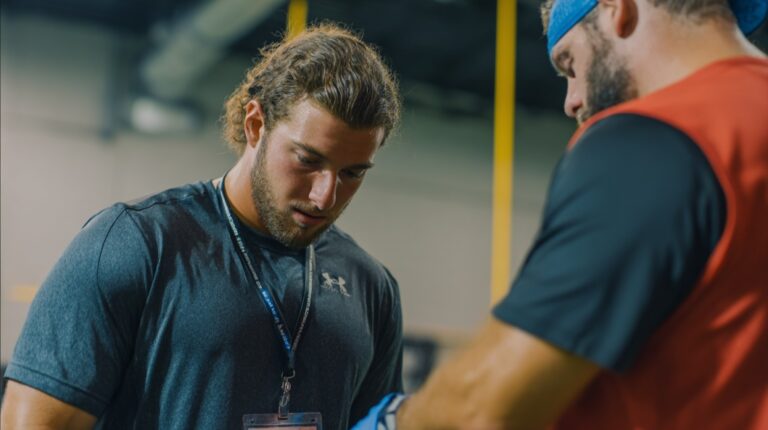An athletic trainer, or AT, is a certified healthcare professional who specializes in the prevention, assessment, and rehabilitation of injuries and illnesses related to physical activity.
Many people confuse them with personal trainers, yet their roles differ significantly.
- Medical care
- Injury response
- Recovery
They play a vital part in protecting the health and safety of athletes while helping them achieve optimal performance levels.
Let’s see what they do exactly.
Core Responsibilities of an Athletic Trainer
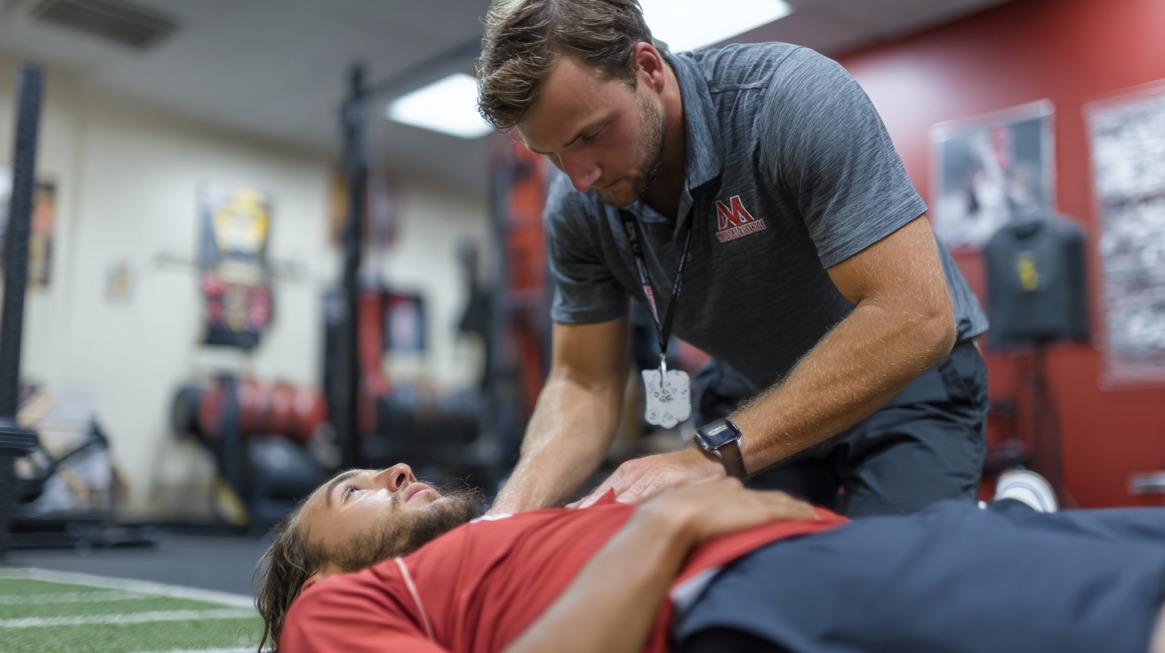
An athletic trainer wears many hats, serving as healthcare providers, educators, and coordinators in the fast-paced world of sports.
Their work extends far past taping ankles and managing injuries.
- Athlete safety
- Injury prevention
- Immediate response
- Rehabilitation
- Education
Injury Prevention
Athletic trainers’ focus lies in preparing the body and mind for the physical challenges of competition.
They perform pre-participation evaluations to detect underlying issues such as muscle imbalances or joint instability.
- Target weak areas
- Improving strength
- Flexibility
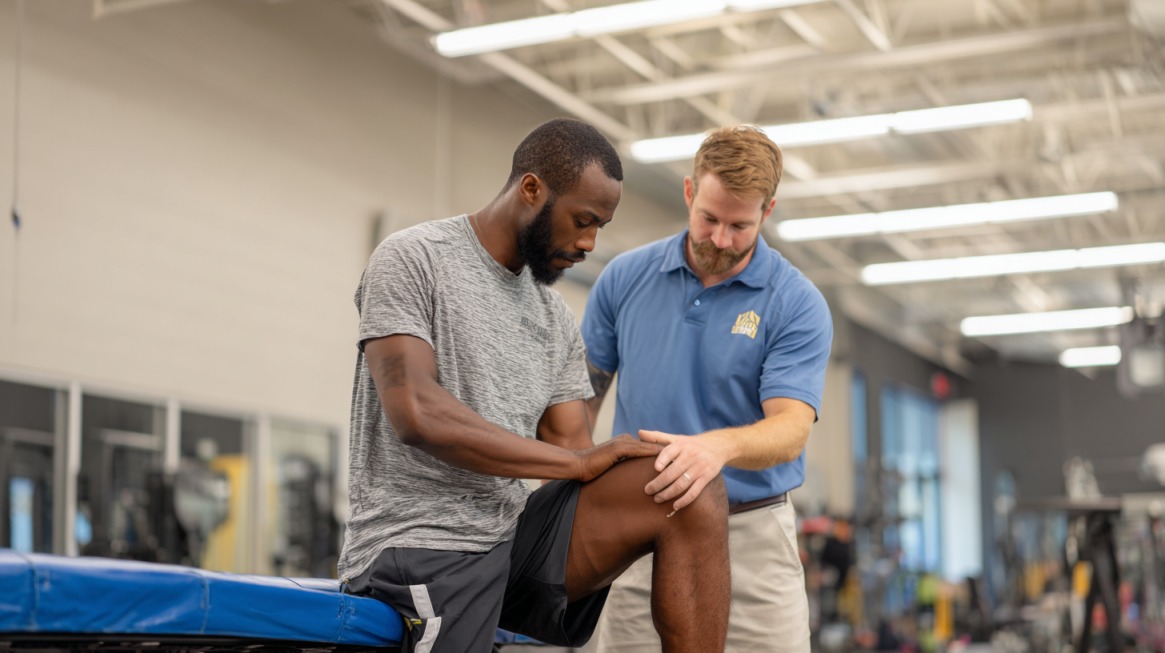
Education remains central to prevention efforts, as athletes are taught proper hydration, nutrition, and movement mechanics.
Training sessions often include safety workshops where athletes learn techniques to protect themselves during play.
- Conducting pre-season health screenings
- Developing sport-specific warm-up and cool-down protocols
- Teaching proper stretching and mobility drills
- Educating on safe training loads and recovery periods
- Monitoring environmental factors like heat, humidity, and field conditions
Emergency and Immediate Care
Athletic trainers’ serve to act decisively in critical moments often determines how severe an injury becomes.
They are trained to handle situations involving sprains, fractures, concussions, and dislocations.
Quick on-field evaluation helps identify immediate needs and prevent complications.
Their emergency care responsibilities also include life-saving procedures such as CPR and AED use.
Trainers manage bleeding control, stabilize injuries, and coordinate emergency transport if hospital care is necessary.
Every second matters in these scenarios, and athletic trainers ensure that each response follows an organized protocol designed for maximum safety.
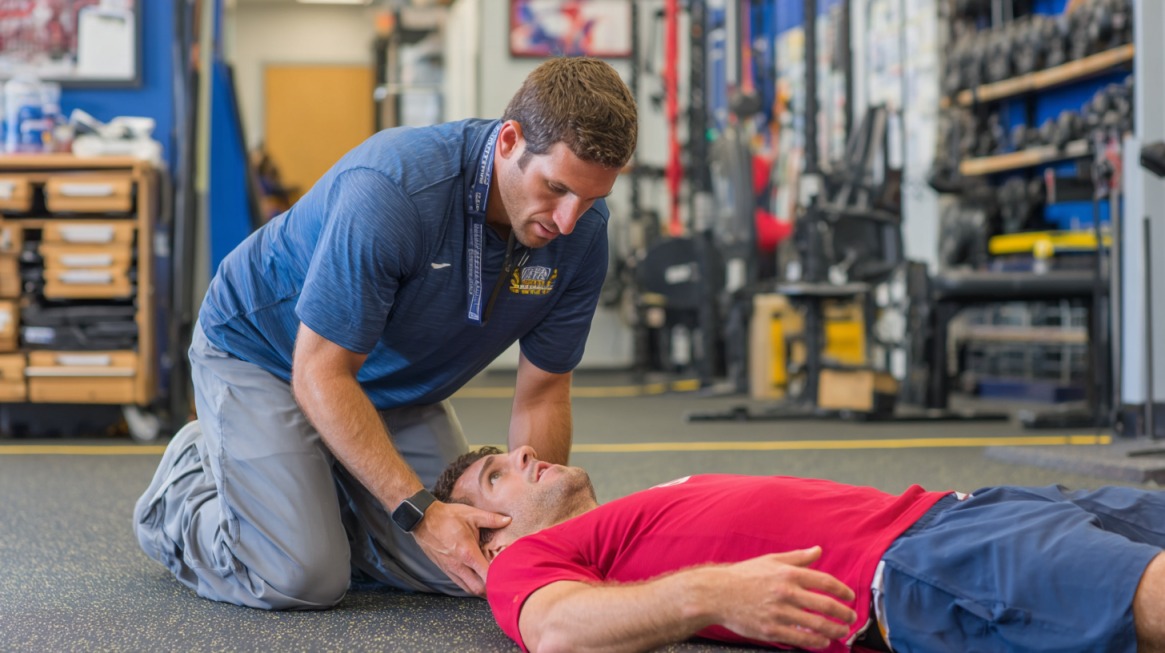
- Providing on-field injury evaluation and stabilization
- Administering CPR and using an AED when needed
- Managing open wounds and bleeding
- Assisting in emergency evacuations or medical transport
- Executing emergency action plans in coordination with staff
Injury Assessment and Diagnosis
After an injury, athletic trainers conduct detailed evaluations to determine its severity and the necessary next steps.
They observe range of motion, strength, pain levels, and functional limitations to form an initial clinical impression.
Collaboration with physicians, physical therapists, and orthopedic specialists ensures that every athlete receives the best possible care.
Athletic trainers communicate findings, document assessments, and support ongoing diagnostic efforts by other healthcare providers.
- Performing physical examinations of the injured areas
- Identifying symptoms of sprains, strains, or fractures
- Using orthopedic tests to determine injury type and extent
- Referring athletes to doctors or specialists for advanced evaluation
- Keeping detailed injury documentation for future reference
Rehabilitation and Recovery
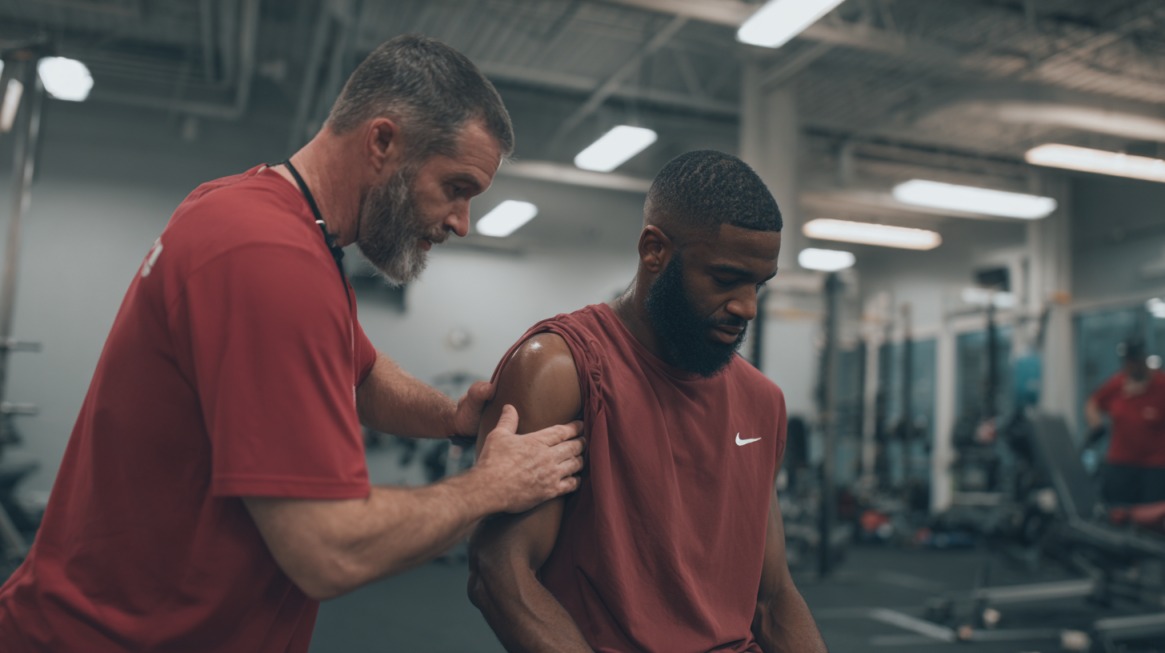
Helping athletes recover safely and effectively represents a cornerstone of an athletic trainer’s role.
Rehabilitation begins once the acute phase of injury has passed.
Trainers develop individualized rehabilitation programs that combine strength training, flexibility work, and functional exercises aimed at restoring movement and confidence.
Constant monitoring allows for adjustments based on healing progress.
Emotional support also plays an important role, as athletes often struggle with frustration during recovery.
Trainers provide motivation and reassurance, ensuring that each step of the process encourages both physical and mental resilience.
- Designing customized rehabilitation programs
- Supervising exercises and therapy sessions
- Tracking progress and adjusting plans as needed
- Providing guidance on pain management and mobility restoration
- Implementing return-to-play protocols safely and gradually
Education and Advocacy
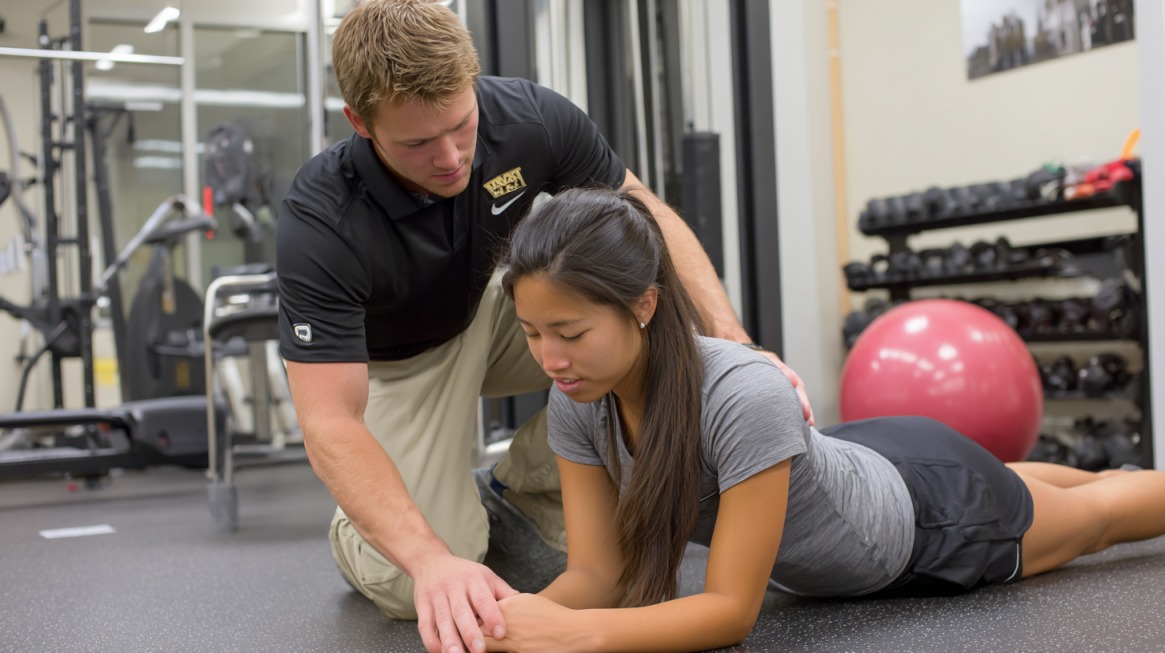
The athletic trainer regularly instructs athletes, coaches, and parents on topics like injury prevention, recovery timelines, and recognizing warning signs of serious conditions.
Their influence extends to policy development, where they advocate for rules and standards that prioritize athlete well-being.
Workshops, seminars, and team meetings often serve as teaching opportunities.
Trainers address common risks such as dehydration, overtraining, and concussion management, promoting awareness across the athletic community.
- Conducting injury-prevention and wellness training sessions
- Promoting proper hydration and heat management practices
- Implementing concussion awareness campaigns
- Encouraging mental health support for athletes
- Supporting legislative efforts for better sports safety policies
Administrative Duties
Behind the scenes, the athletic trainer handles crucial administrative work that keeps athletic programs organized and compliant.
They maintain accurate injury and treatment records, ensuring that every case is properly documented for legal and medical purposes.
Communication with coaches, parents, and physicians helps maintain transparency and collaboration throughout an athlete’s care process.
Administrative duties also involve planning and evaluation of athletic safety programs.
Trainers contribute to developing emergency procedures, medical policies, and health initiatives that promote a safer athletic environment.
- Maintaining confidential medical records and injury reports
- Coordinating with healthcare providers and coaching staff
- Managing budgets for medical supplies and equipment
- Participating in safety program development and review
- Assisting with policy updates and institutional compliance
Where Athletic Trainers Work
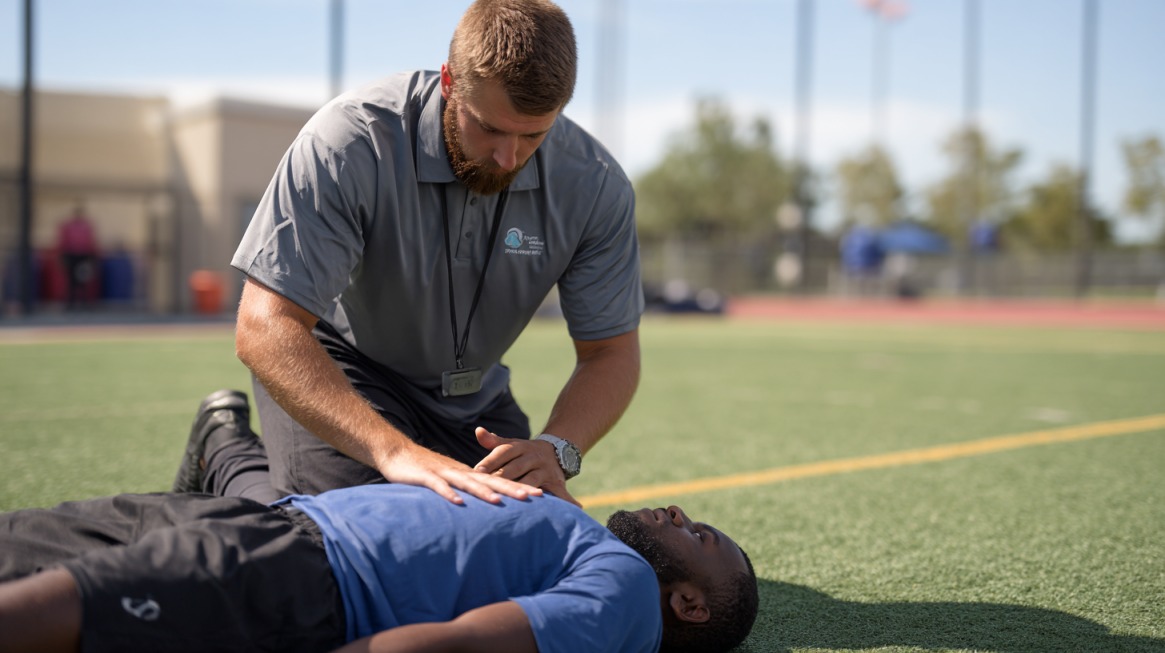
Athletic trainers serve as essential healthcare professionals in various environments, applying their skills where physical performance and safety intersect.
Their work extends past the sidelines of sports fields into classrooms, clinics, and even workplaces.
In high schools and colleges, athletic trainers play a crucial role in promoting the well-being of student-athletes. They manage on-field injuries, conduct safety training, and guide nutrition, hydration, and body mechanics.
To keep your energy up during long study or practice sessions, explore our list of healthy study snacks that boost focus and performance.
Professional sports teams depend on athletic trainers for comprehensive care throughout the season. They travel with the teams, manage rehabilitation schedules, and coordinate medical care.
Hospitals and clinics employ athletic trainers as part of rehabilitation and physical therapy teams.
They assist patients in recovering mobility and function after surgery or injury, bridging the gap between medical treatment and physical performance recovery.
Military, police, and fire departments rely on athletic trainers to maintain peak physical readiness.
They design conditioning programs, respond to work-related injuries, and help service members recover quickly so they can return to duty.
Training, Certification, and Skills Required
Athletic trainers must meet rigorous academic and professional standards before entering the field.
Their education combines medical science with practical training, creating a foundation for handling a wide range of injuries and conditions.
Academic preparation begins with a bachelor’s degree in athletic training, though many pursue a master’s degree to expand their knowledge and improve career opportunities.
Certification through the Board of Certification (BOC) is mandatory, followed by obtaining state licensure where required.
Educational coursework equips them with essential knowledge in several key disciplines, ensuring they can handle both prevention and emergency care.
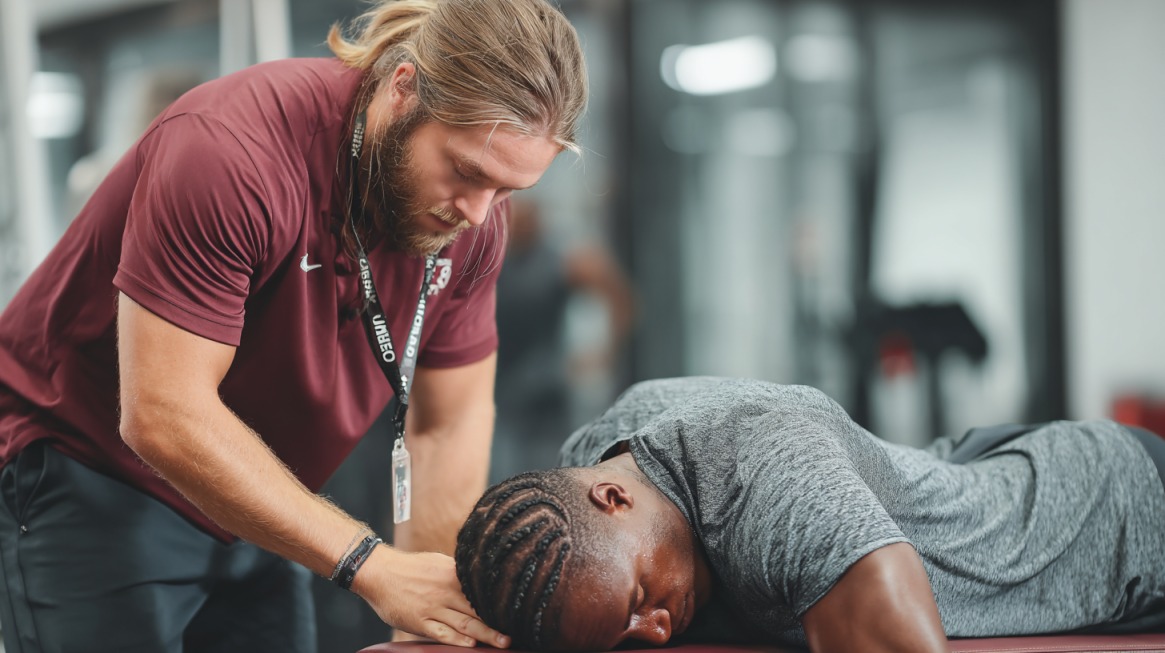
- Anatomy and physiology for understanding body mechanics
- Kinesiology for movement analysis
- Pathology to recognize injury mechanisms
- Nutrition and biomechanics for performance support
In addition to medical expertise, successful athletic trainers demonstrate strong interpersonal and cognitive abilities.
Athletic Trainer vs. Other Roles
Athletic trainers often get confused with other fitness or medical professionals, yet their responsibilities set them apart. Comparing their work to personal trainers highlights a clear distinction in focus and scope.
Personal trainers emphasize exercise routines, body composition goals, and general health improvement.
Athletic trainers, on the other hand, function as healthcare providers, managing injury treatment, prevention, and post-injury care.
When compared to sports medicine physicians, athletic trainers operate in close collaboration but under medical supervision.
They are not doctors but play a critical role in implementing medical treatment plans and assisting with recovery strategies.
Their presence ensures consistent care between medical evaluation and hands-on rehabilitation.
Value of Athletic Trainers

Athletic trainers add measurable value to organizations by improving safety, reducing medical costs, and enhancing performance outcomes.
Through education and consistent monitoring, they protect athletes and clients from preventable harm while promoting long-term wellness.
Emotional support is another often-overlooked contribution.
Athletes recovering from injuries face both physical and psychological challenges, and athletic trainers provide motivation and reassurance during recovery.
Summary
Athletic trainers play an essential role in healthcare and sports performance.
Their medical expertise, preventive strategies, and rehabilitation skills make them invaluable across multiple environments.
Through continued education, advocacy, and public awareness, more athletes and organizations can gain access to their professional care, ensuring safety, health, and peak performance for all.

